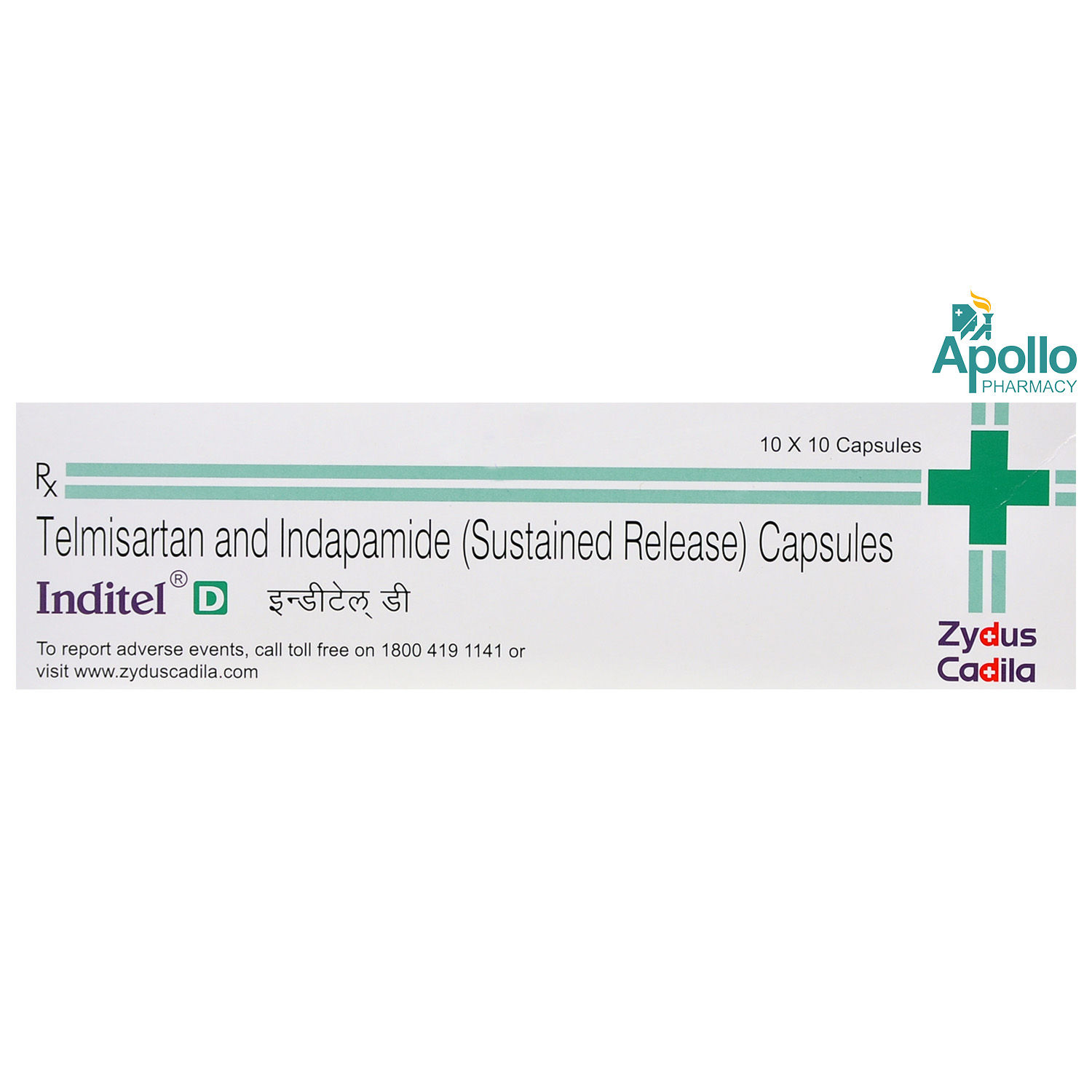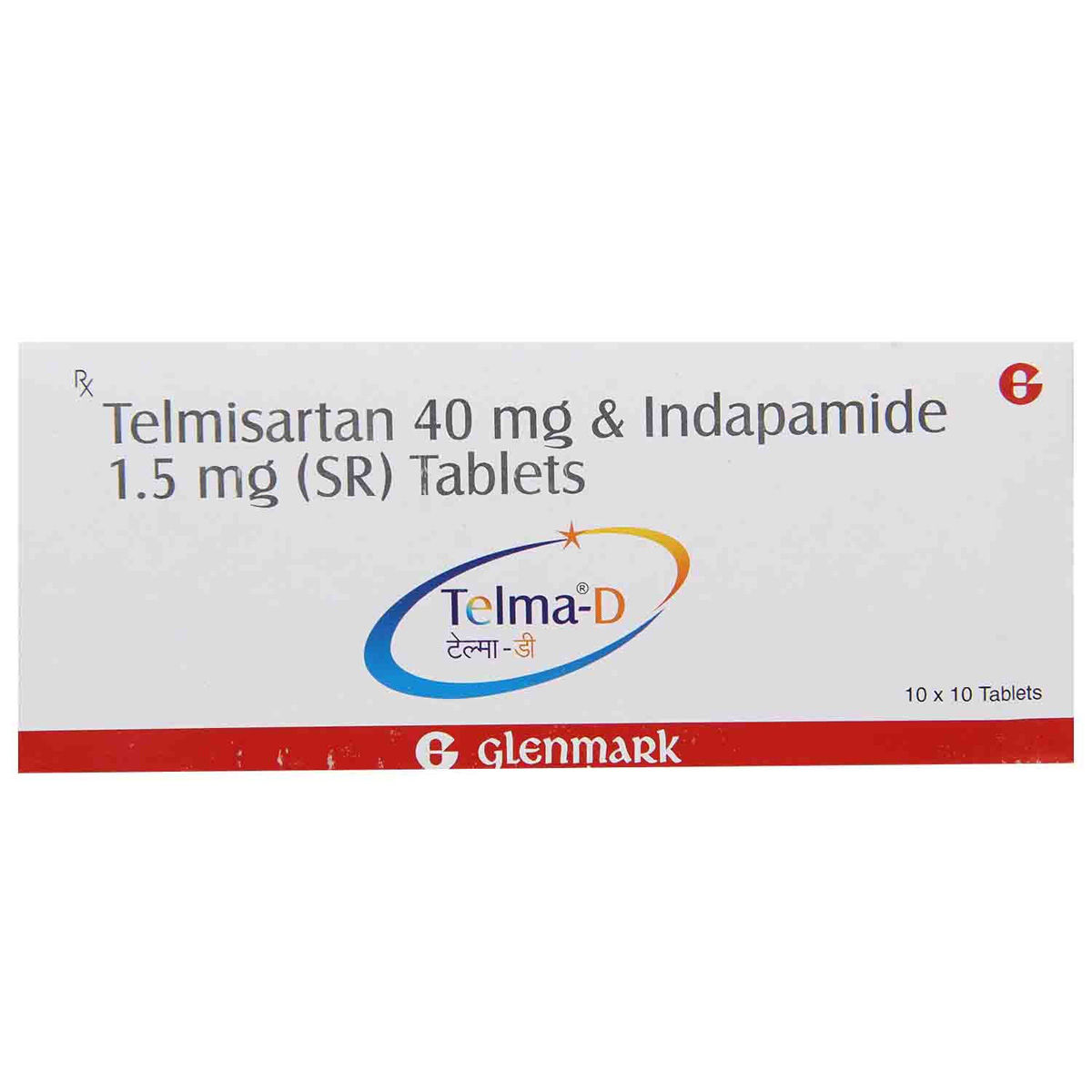TELMISARTAN+INDAPAMIDE
About TELMISARTAN+INDAPAMIDE
TELMISARTAN+INDAPAMIDE belongs to the class of anti-hypertensives primarily taken to treat hypertension (high blood pressure). Hypertension or high blood pressure is a life-long or chronic condition in which the blood pressure against the artery wall becomes too high. It can lead to the risk of heart diseases, like heart attack and stroke.
TELMISARTAN+INDAPAMIDE is a combination of Telmisartan (angiotensin II receptor antagonist) and Indapamide (diuretic or water pill). Telmisartan is an angiotensin receptor blocker that helps to relax and widen the blood vessels (arteries). Indapamide is a diuretic that removes extra water and several electrolytes from the body. It also relaxes blood vessels and enhances blood flow. Together it lowers blood pressure and prevents the risk of stroke, heart attack and oedema (fluid retention).
Take TELMISARTAN+INDAPAMIDE as prescribed by your doctor. You are advised to take TELMISARTAN+INDAPAMIDE for as long as your doctor has prescribed it for you depending on your medical conditions. You may experience nausea, diarrhoea, stomach pain, constipation, infection, headache, dizziness, back pain, inflammation of the nose, chest pain, weakness, indigestion, hypertonia (increased muscle tone), nervousness, peripheral oedema, sore throat, cough, conjunctivitis (inflammation in the eyeball), sinus inflammation. Most of these side effects of TELMISARTAN+INDAPAMIDE do not require medical attention and gradually resolve over time. However, if the side effects are persistent, reach out to your doctor.
Do not use potassium supplements or salt substitutes unless the doctor has told you. In rare cases, TELMISARTAN+INDAPAMIDE can cause a condition that results in the skeletal muscle problem, leading to further kidney failure. If you notice unexplained muscle pain, dark colour urine, tenderness or weakness, especially if you also have a fever or unexplained tiredness, immediately contact the doctor. If you have diabetes, do not use TELMISARTAN+INDAPAMIDE with any medication that contains aliskiren (a blood pressure medicine). Before taking TELMISARTAN+INDAPAMIDE, tell your doctor if you have ever had liver disease, kidney failure, glaucoma, high or low levels of magnesium or potassium in your blood, have allergies or asthma, lupus (an autoimmune disease), diabetes or an allergy to penicillin or sulfa drugs.
Uses of TELMISARTAN+INDAPAMIDE
Medicinal Benefits
TELMISARTAN+INDAPAMIDE belongs to the class of anti-hypertensives primarily taken to treat hypertension (high blood pressure). TELMISARTAN+INDAPAMIDE is a combination of Telmisartan (angiotensin II receptor antagonist) and Indapamide (diuretic or water pill). Telmisartan is an angiotensin receptor blocker that helps to relax and widen the blood vessels (arteries). Indapamide is a diuretic that removes extra water and several electrolytes from the body. It also relaxes blood vessels and enhances blood flow. Together it lowers blood pressure and prevents the risk of stroke, heart attack and oedema (fluid retention).
Directions for Use
Storage
Side Effects of TELMISARTAN+INDAPAMIDE
- Nausea
- Diarrhoea
- Stomach pain
- Constipation
- Infection
- Headache
- Dizziness
- Back pain
- Inflammation of the nose
- Chest pain
- Weakness
- Indigestion
- Nervousness
- Peripheral oedema
- Sore throat
- Cough
Patients Concern
Disease/Condition Glossary
Hypertension: It is a chronic condition when blood pressure is too high. This condition can lead to hardened arteries (blood vessels), decreasing the blood and oxygen flow to the heart. Blood pressure is the measurement of the force that our heart uses to pump blood to all parts of the body. Raised blood pressure can cause chest pain (angina) and heart attack (when blood supply to the heart is blocked). Additionally, high blood pressure also causes brain damage (stroke) and kidney failure. High blood pressure can be diagnosed with the help of a blood pressure monitor or sphygmomanometer. Systolic pressure is the pressure when the heart pumps blood out. On the other hand, diastolic pressure is when your heart is at the resting stage between heartbeats. If your blood pressure is 140/90 mm of Hg, it means the systolic pressure is 140 mm of Hg, and diastolic pressure is 90 mm of Hg. Ideal blood pressure should be between 90/60 mm of Hg and 120/80 mm of Hg.
FAQs
No, you are advised to inform your doctor and monitor your blood pressure for at least two weeks before stopping the TELMISARTAN+INDAPAMIDE. Depending upon your current blood pressure readings, there is a possibility your doctor may lower your medicine dosage and not recommend to discontinue it.
TELMISARTAN+INDAPAMIDE can be safely taken as long as your doctor has prescribed it to you. Conditions such as high blood pressure are life-long conditions and one should not abruptly discontinue it without discussing it with a doctor.
The use of TELMISARTAN+INDAPAMIDE is considered harmful to people with known allergy to any of the components of TELMISARTAN+INDAPAMIDE. It should preferably be avoided in people with severe kidney or liver damage and people with anuria (reduction or absence of urine). It should also be avoided in women who are in the second and third trimesters of their pregnancy.
TELMISARTAN+INDAPAMIDE is usually safe to take for a long time. Some blood pressure medicines work best when they are taken for a long time. If not sure, inform your doctor.
In case, you have missed a dose of TELMISARTAN+INDAPAMIDE, you are advised to take it as soon as you remember. However, try not to miss a dose in the first place, if it's time for you to take your next dose, then do not take both the doses together. Take only one dose, taking a double dose of TELMISARTAN+INDAPAMIDE will lead to low blood pressure.
Yes, prolonged intake of TELMISARTAN+INDAPAMIDE can cause an increase in blood potassium level. So, patients taking TELMISARTAN+INDAPAMIDE should avoid taking supplements and food rich in potassium to avoid any unpleasant side-effect.



